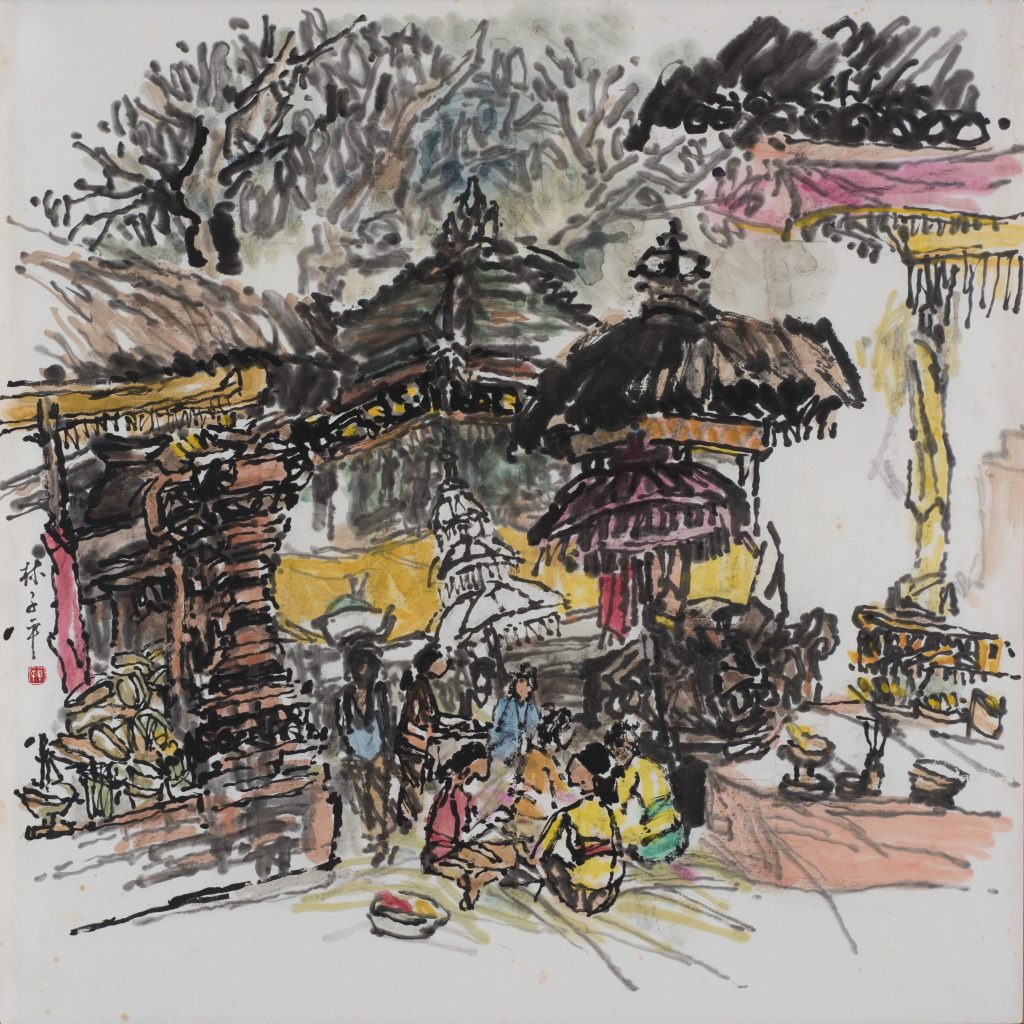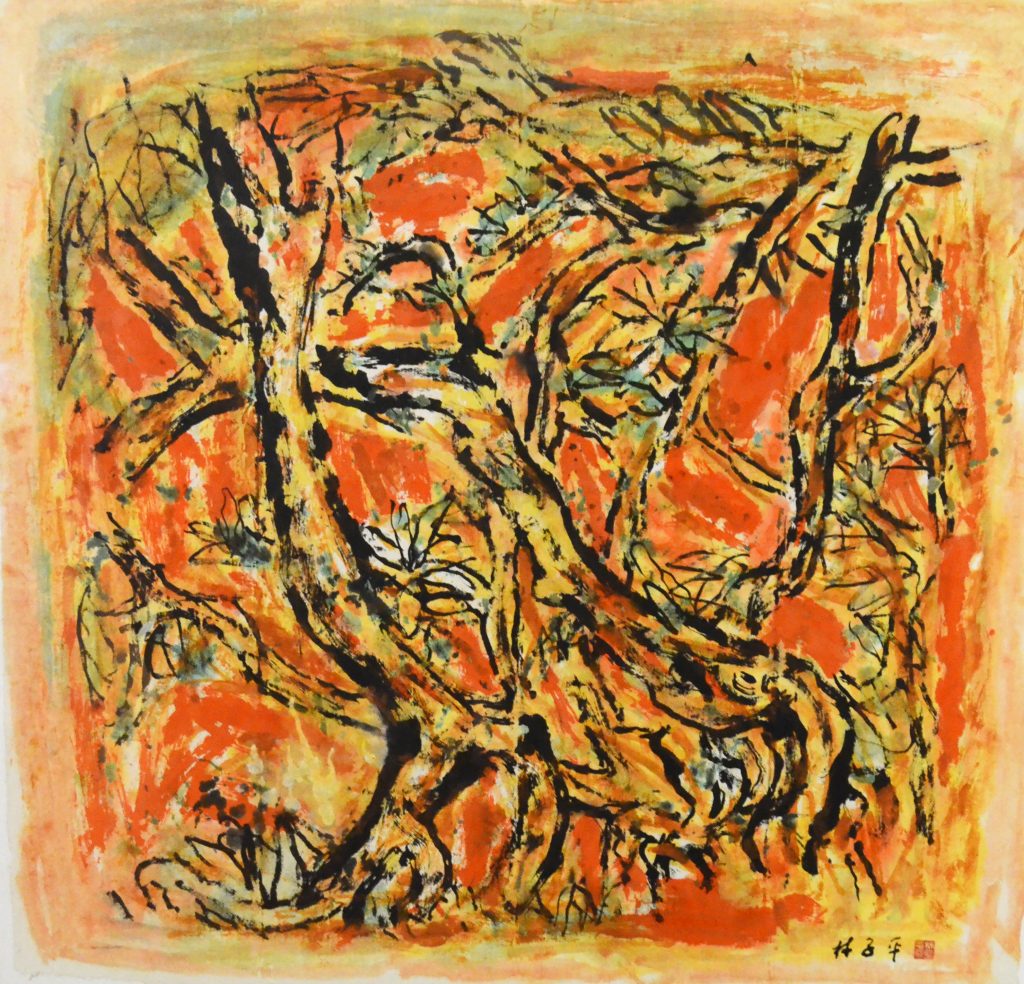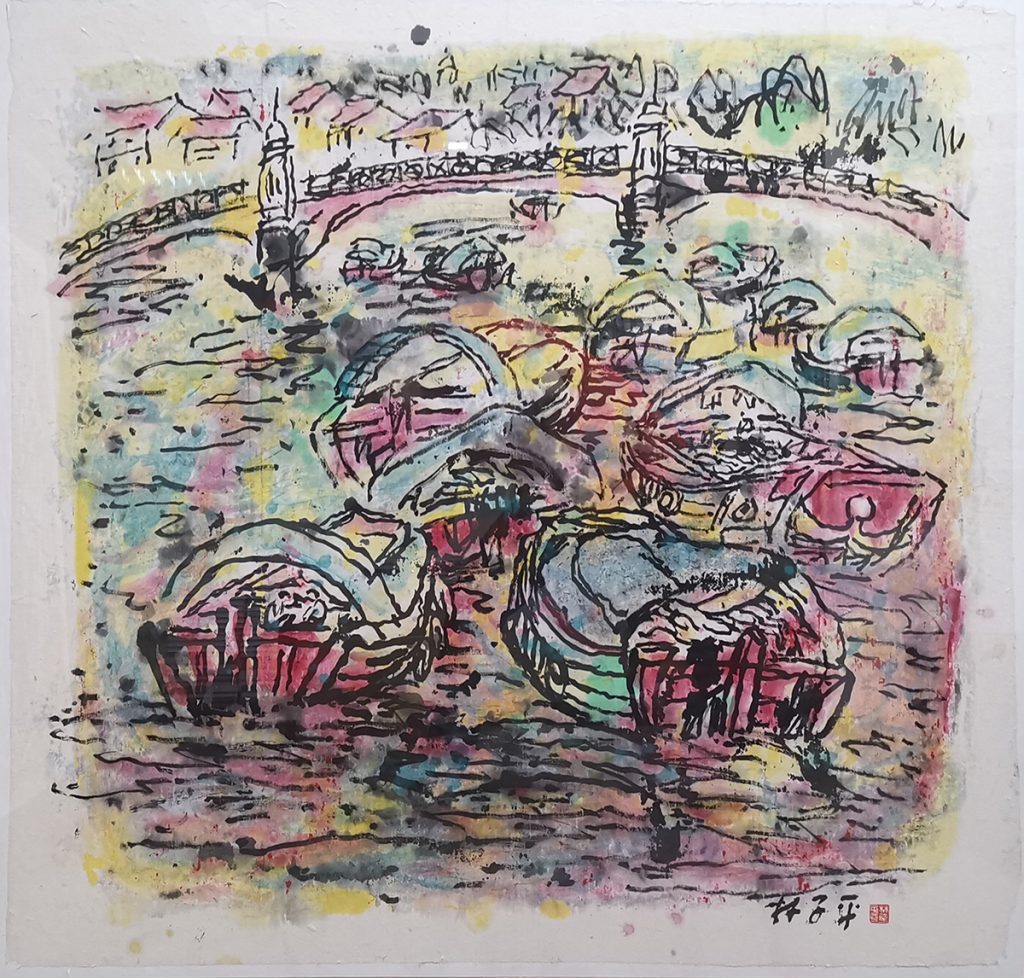Born in 1921, Lim Tze Peng is now reaching 100 years of age. He is still active, lucid and painting. Since our headquarters is in his birth city, we wanted to recount several reasons why Lim continues to capture our hearts, and is definitely a collectible artist — especially if you call Singapore and Southeast Asia home.

Image courtesy of The Straits Times.
1. His origins in the practice of Chinese calligraphy were masterful.
Contrary to popular belief, Lim was not self-taught. He studied under calligraphy teachers since his early school days and has now wielded a brush for seven decades. When Lim was but a child, the 1927 Chinese Civil War forced many intelligentsia to migrate south to the Straits of Malacca, bringing with them their epigraphic culture. These diasporic seeds were formative for Lim Tze Peng, as he studied the work of figures like the reformist-literati calligrapher Kang Youwei, which later influenced his own jìn shí wèi or “epigraphic feel”.

Lim Tze Peng, ‘Bali Temple’, c. early 2000s, Chinese ink and colour on paper, 69 x 69 cm. Image courtesy of artcommune gallery.
2. He painted the region with a true tropical realism, devoid of the trappings of the Western exotic gaze.
Lim travelled often to Bali with a group of Singapore painters called the Ten Men Group in the 1960s, and would often return to his favourite temples like Tanah Lot for many years afterwards. He spoke basic Bahasa to the locals, and thus differentiated himself from his Indo-European contemporaries, like Adrien-Jean le Mayeur or Willem Gerard Hofker, or even some of his predecessors and mentors like Nanyang painter Liu Kang, who often painted Bali in vivid, sumptuous colour through a Western modernist lens. Instead, Lim’s Bali is not exoticised, but as art historian Bridget Tracey Tan describes, his paintings are “wet and dreamlike”, true to the mystical and humid feeling Bali is so well loved for.

Lim Tze Peng, ‘Trees’, c. late 2000s, Chinese ink and colour on paper, 100 x 106 cm. Image courtesy of artcommune gallery.
3. His leitmotif of the ancient banyan tree stands in, perhaps, for his own art.
From the early 2000s, Lim began painting a series of banyan trees in Bali, and later, when he was too frail to travel, in Singapore. He has said that these trees have a sense of cáng jìn, a vigour and pure vitality that comes with a sense of ancientness. And just as trees become more magnificent as they age, his oeuvre has only strengthened over time.

Lim Tze Peng, ‘Gestures in Ink XIII’, 2005, Chinese ink and colour on paper, 69 x 138 cm. Image courtesy of artcommune gallery.
4. Lim continues to innovate, crossing Eastern ink painting with Western gestural abstraction.
In 2006, after being nationally recognised by being awarded with a Cultural Medallion and a retrospective at the Singapore Art Museum, and so freed from nationalistic narratives, Lim Tze Peng debuted his most groundbreaking series to date with an exhibition titled Infinite Gestures. In these works, the calligraphy corresponds to the objects the characters symbolised with the branches of trees composed by bold strokes. In so doing, he conflates the semiotic and the figurative or representational, and speaks to the very essence of things in the world. Later on, his hú tú zì or “muddled writing” broke with literati tradition and even impressed Fan Di’an, then the Director of the National Art Museum of China, so much so that he promised to travel Lim’s exhibition Inroads in Shanghai and Beijing, fulfilling the artist’s lifelong dream to find recognition in the spiritual home of the calligraphic arts.

Lim Tze Peng, ‘Bumboats by the River’, Chinese ink and colour on paper, 105 x 108 cm. Image courtesy of artcommune gallery.
5. He still has more up his sleeve, yet to be revealed!
With a centennial exhibition coming up in June, and a biography titled The Soul of Ink: Lim Tze Peng at 100 by Woon Tai Ho, the artist continues to stretch out his limbs. We hear there are still works that have not yet been seen, and we can only look forward to living and learning more through his eyes.








